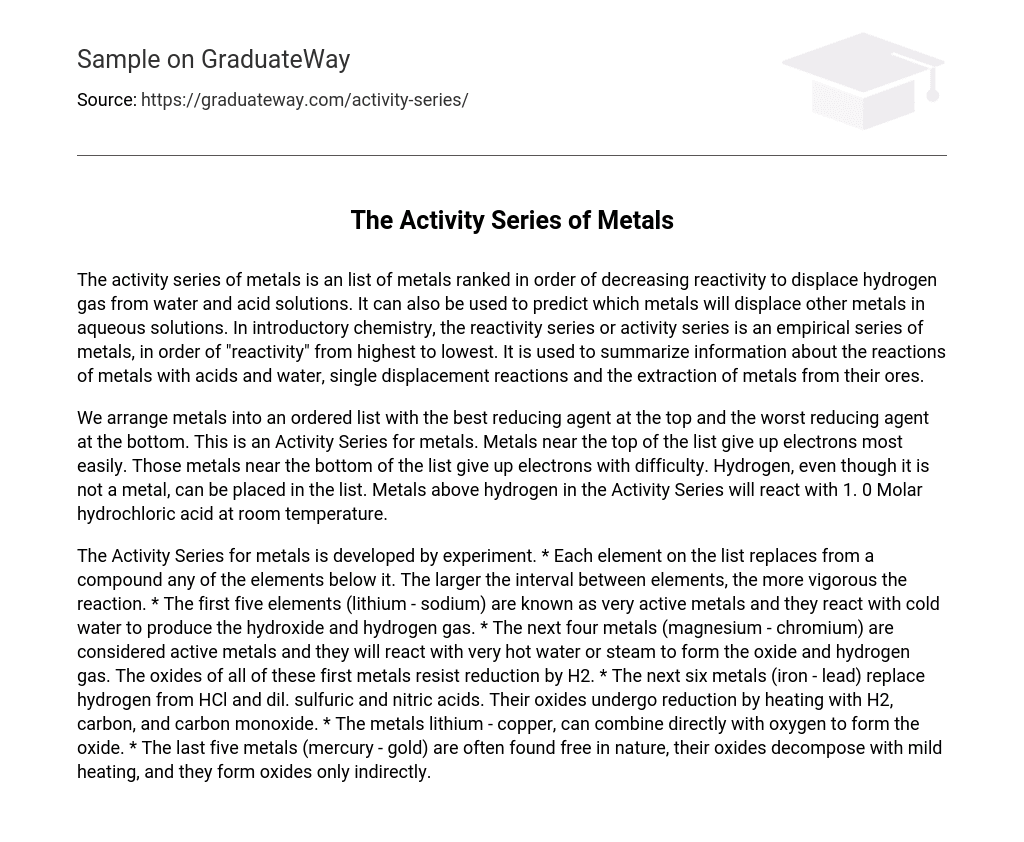The activity series of metals is a list of metals ranked by decreasing reactivity to displace hydrogen gas from water and acid solutions. It can predict which metals will displace other metals in aqueous solutions. In introductory chemistry, the reactivity series or activity series is an empirical series of metals, ranked from highest to lowest reactivity. It summarizes information about reactions of metals with acids and water, single displacement reactions, and extraction of metals from their ores.
We organize metals into an ordered list known as the Activity Series for metals, where the top represents the best reducing agent and the bottom represents the worst reducing agent. Metals positioned near the top of the list readily release electrons, while those closer to the bottom demonstrate difficulty in releasing electrons. Despite not being a metal, hydrogen can still be included in this list. Metals placed above hydrogen in the Activity Series will react with 1. 0 Molar hydrochloric acid under room temperature conditions.
The Activity Series for metals is determined through experimental observations. Each element on the list has the ability to displace any of the elements listed below it in a compound. The larger the difference in position between the elements, the more vigorous the reaction. The first five elements, namely lithium to sodium, are highly reactive metals and when they react with cold water, they produce hydroxide and hydrogen gas. The next four metals, which range from magnesium to chromium, are considered active metals and their reaction with very hot water or steam results in the formation of oxide and hydrogen gas. Moreover, the oxides of these metals cannot be reduced by H2. Moving on, the following six metals, iron to lead, have the capability to replace hydrogen in HCl and dilute sulfuric and nitric acids. Furthermore, their oxides can be reduced through heating with H2, carbon, and carbon monoxide. Metals ranging from lithium to copper can directly combine with oxygen to form oxides. Lastly, the remaining five metals, mercury to gold, are commonly found in a free state in nature. Their oxides decompose when mildly heated and these metals only indirectly form oxides.





